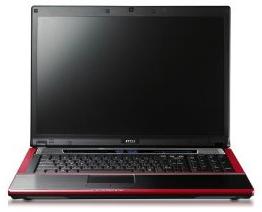 As I mentioned earlier, one of Amber's caregivers at her group home decided to steal the laptop while she was away at the hospital and to replace it I picked her up a new MSI E7235-295US and installed Fedora 13 Linux.
As I mentioned earlier, one of Amber's caregivers at her group home decided to steal the laptop while she was away at the hospital and to replace it I picked her up a new MSI E7235-295US and installed Fedora 13 Linux.
Everthing worked right out of the box but a few tweaks were needed for optimum performance.
Since it took a while to find all the info I needed, I thought it would be helpful to others to share my results here.
The start, get all updates and install the rpmforge repository. As root, do:
rpm -ivh http://download1.rpmfusion.org/free/fedora/rpmfusion-free-release-stable.noarch.rpm
rpm -ivh http://download1.rpmfusion.org/nonfree/fedora/rpmfusion-nonfree-release-stable.noarch.rpm
Audio
The first thing you're going to notice is that internal speaker audio is really crappy. Easy to fix.
Add the following line to the bottom of /etc/modprobe.d/dist-alsa.conf
options snd-hda-intel model=3stack-6ch-dig power_save=10 power_save_controller=N
Next, edit /etc/pulse/daemon.conf and change default-sample-channels to 6. Don't forget to remove the semi-colon too.
; default-sample-format = s16le
; default-sample-rate = 44100
default-sample-channels = 6
; default-channel-map = front-left,front-right
Video
By default, Fedora installs the nouveau video drivers, which work but they don't take full advantage of the GeForce GT 130M. To install the vendor nvidia drivers, as root do:
yum -y install kmod-nvidia
If the default 1440x900 video mode is a little too much for you, ModeLines can be added to xorg.conf for other resolutions. Here is my /etc/X11/xorg.conf which you should only modify after installing kmod-nvidia
###
Section "ServerLayout"
Identifier "Default Layout"
Screen "Default Screen" 0 0
InputDevice "Keyboard0" "CoreKeyboard"
InputDevice "Mouse0" "CorePointer"
EndSection
Section "Files"
ModulePath "/usr/lib64/xorg/modules/extensions/nvidia"
ModulePath "/usr/lib64/xorg/modules"
EndSection
Section "ServerFlags"
Option "AIGLX" "on"
EndSection
Section "InputDevice"
Identifier "Keyboard0"
Driver "keyboard"
Option "XkbLayout" "us"
Option "XkbModel" "pc105"
EndSection
Section "InputDevice"
Identifier "Mouse0"
Driver "mouse"
Option "Protocol" "auto"
Option "Device" "/dev/input/mice"
Option "Emulate3Buttons" "no"
Option "ZAxisMapping" "4 5"
EndSection
Section "Monitor"
Identifier "Monitor0"
VendorName "Unknown"
ModelName "Unknown"
Option "DPMS"
Modeline "1280x768" 80.14 1280 1344 1480 1680 768 769 772 795 -HSync +Vsync
Modeline "1280x800" 83.46 1280 1344 1480 1680 800 801 804 828 -HSync +Vsync
EndSection
Section "Device"
Identifier "Videocard0"
Driver "nvidia"
EndSection
Section "Screen"
Identifier "Default Screen"
Device "Videocard0"
Monitor "Monitor0"
SubSection "Display"
Modes "1440x900" "1280x800" "1280x768"
EndSubSection
EndSection
Section "Extensions"
Option "Composite" "Enable"
EndSection
###
For everything else, I recommend reading Personal Fedora 13 Installation Guide
rpm -ivh http://download1.rpmfusion.org/nonfree/fedora/rpmfusion-nonfree-release-stable.noarch.rpm